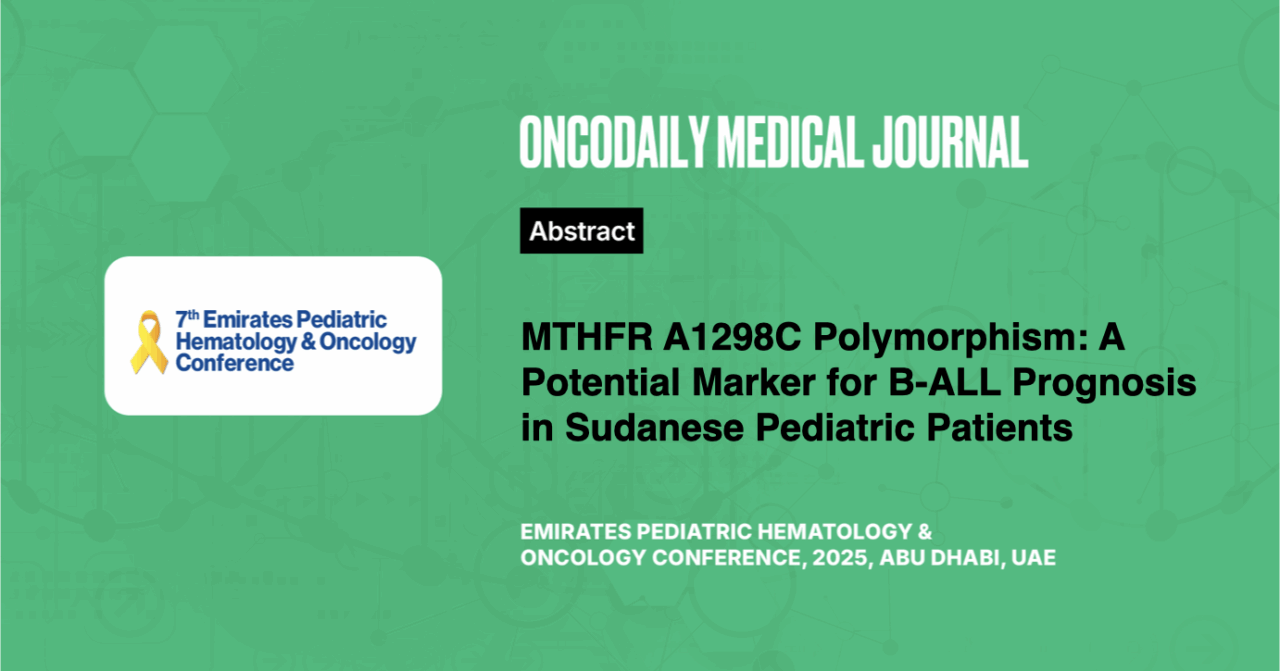MTHFR A1298C Polymorphism: A Potential Marker for B-ALL Prognosis in Sudanese Pediatric Patients
Abstract
Introduction: Acute Lymphoblastic Leukemia (ALL) is the most common pediatric leukemia, characterized by the clonal proliferation of immature lymphoid cells. Among its two subtypes, B-ALL and T-ALL, genetic factors like methylenetetrahydrofolate reductase (MTHFR) polymorphisms have been implicated in disease progression and immune response modulation. This study explores the correlation between MTHFR C677T and A1298C polymorphisms and CD marker expression in Sudanese children with ALL. The study aimed to investigate the association between MTHFR polymorphisms and hematological and molecular parameters in ALL, particularly focusing on their correlation with CD markers in B-ALL and T-ALL phenotypes.
Methodology: This case-control study included 73 ALL patients and 73 controls. DNA was extracted and analyzed for MTHFR C677T and A1298C polymorphisms using allele-specific PCR. Flow cytometry was used to evaluate CD markers. Hematological parameters were assessed, and statistical analysis was performed using SPSS v26, with significance set at p < 0.05.
Results: The allele frequency of A1298C polymorphism showed significant differences between cases and controls (p = 0.00). A significant association was found between A1298C polymorphism and CD markers (CD10, CD19) in B-ALL patients. However, no significant correlation was observed between the C677T polymorphism and CD markers. Hematological parameters, including TWBCs, RBCs, PLTs, and Hb, differed significantly between cases and controls (p < 0.05). Findings indicate a potential role of the MTHFR A1298C polymorphism in modulating immune responses and influencing B-ALL phenotypes. This aligns with previous studies linking MTHFR genetic variations to leukemogenesis and immune modulation. The absence of significant correlations for the C677T polymorphism suggests its limited role in this cohort.
Conclusion: The MTHFR A1298C polymorphism is significantly associated with CD markers in B-ALL patients, suggesting its involvement in disease progression and potential prognostic value. Further studies are needed to validate these findings and explore molecular mechanisms across broader populations.





